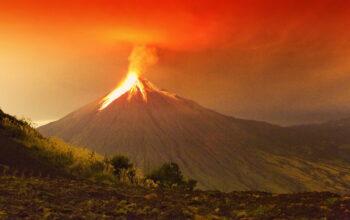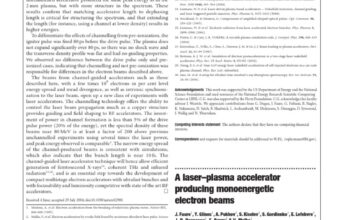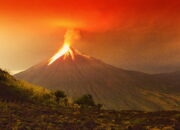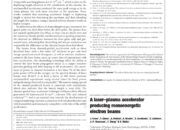Atomic energy, an ethereal force harnessed by human intellect, has long served as both a beacon of innovation and a specter of dread. This duality permeates the narrative of nuclear physics, where the achievements of the original nuclear laboratories, particularly during the mid-20th century, are curiously juxtaposed with the ethical and existential ramifications of their discoveries. Embarking on a historical journey through the annals of atomic research, one finds a tapestry woven with intricate threads of scientific ambition, geopolitical intrigue, and unforeseen consequences—collectively termed “Atomic Secrets.”
The genesis of nuclear research in laboratories such as those at Los Alamos and Oak Ridge National Laboratory marked a pivotal epoch in scientific history. It was within these confines that the subatomic world became a canvas for exploration. Scientists, akin to modern-day alchemists, endeavored to unravel the mysteries of atomic structure, energy release, and nuclear reactions. The alluring prospect of energy extracted from the nucleus epitomized the ultimate triumph of humankind over nature’s most fundamental particles.
At the heart of these endeavours lay the Manhattan Project, a clandestine operation birthed out of necessity during World War II. This monumental collaborative effort epitomized a confluence of intellect and urgency, whereby physicists, chemists, and engineers synergized to forge a weapon of unprecedented destructive capability: the atomic bomb. This project not only catalyzed the creation of nuclear fission devices but also unveiled a trove of knowledge regarding atomic interactions. The separation of isotopes, the chain reaction phenomena, and the myriad applications of nuclear energy became the bedrock of modern physics—a treasure trove that would yield both prospects and perils.
As scientists scrutinized the boundless possibilities of atomic energy, the post-war era revealed the complexities of these discoveries. The scars of Hiroshima and Nagasaki permeated the global psyche, creating a schism between scientific progress and moral responsibility. The very biochemistry that fueled the creation of weapons of mass destruction also held the keys to nuclear power—an energy source heralded as the solution to the burgeoning energy crisis. The paradox became evident: a singular discovery birthed both salvation and annihilation.
Nuclear laboratories became crucibles not just of scientific inquiry but also of philosophical deliberation. A metaphor emerges here—one might equate nuclear physicists to Prometheus, the titan who bestowed fire upon humanity. In his exuberance, he overlooked the consequences of such a gift. Consequently, scientific luminaries from the original nuclear labs found themselves grappling with questions that transcended empirical inquiry. How does one wield such power responsibly? Can the flickering flame of atomic energy be nurtured without inciting infernos of destruction? The dialogue that emerged among physicists became a medley of concern, ambition, and advocacy.
The intricate science of radioactivity elucidates this conundrum. In the laboratories, the study of isotopes and their decay processes revealed the ability to generate colossal amounts of energy through nuclear fission. Yet, this powerful force also harbored the potential for catastrophic consequences, as evidenced by the Chernobyl and Fukushima disasters. Such events indelibly marked the public perception of nuclear power, transforming it from a symbol of progress into a specter of anxiety. The scientists, whose original intentions were to illuminate, found their innovations shrouded in permanent shadows.
With this dichotomy established, the question arises: what are the lasting impacts of the original nuclear labs’ discoveries on contemporary society? The very fabric of modern technological innovations—medical treatments, energy solutions, and agricultural enhancements—draws heavily from the fundamental principles unearthed by early atomic research. Radiopharmaceuticals have revolutionized diagnostics, and nuclear fission remains a vital contributor to energy infrastructures in various countries. However, the moral implications linger, compelling a reevaluation of the ethical frameworks governing scientific inquiry and application.
Furthermore, the evolution of nuclear non-proliferation treaties and international coalitions underscores humanity’s collective recognition of the need to navigate the complexities of nuclear capabilities judiciously. Institutions such as the International Atomic Energy Agency (IAEA) exemplify efforts to balance scientific advancement with global security. This endeavor embodies the metaphorical journey of a ship traversing stormy seas; the steering wheel must be grasped firmly to avoid treacherous waters.
In summation, the narrative of “Atomic Secrets” encapsulates a rich tapestry replete with the triumphs and tribulations of humanity’s quest for understanding the atomic realm. The legacies of the original nuclear labs resonate far beyond the confines of scientific academia—seeping into cultural, political, and ethical frameworks that define contemporary civilization. This discourse crystallizes the diverse impact wielded by the foundational experiments of yore. In recognizing both the allure and the ambivalence of nuclear energy, society stands at the precipice of a pivotal choice: to harness the light of atomic knowledge while vigilantly heeding the shadows it casts.
As this intricate story unfolds, it remains imperative to appreciate the unique appeal of atomic research. Within its complexity lies a fundamental truth: knowledge is a double-edged sword, capable of forging paths toward enlightenment or descent into darkness, depending on the intentions and actions of those who wield it. The legacy of the original nuclear laboratories, thus, serves as both an instructive reminder and a narrative of caution, beckoning future generations to navigate the atomic frontier with wisdom and foresight.











